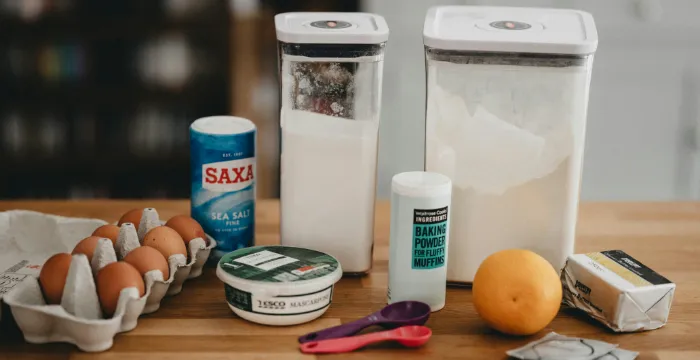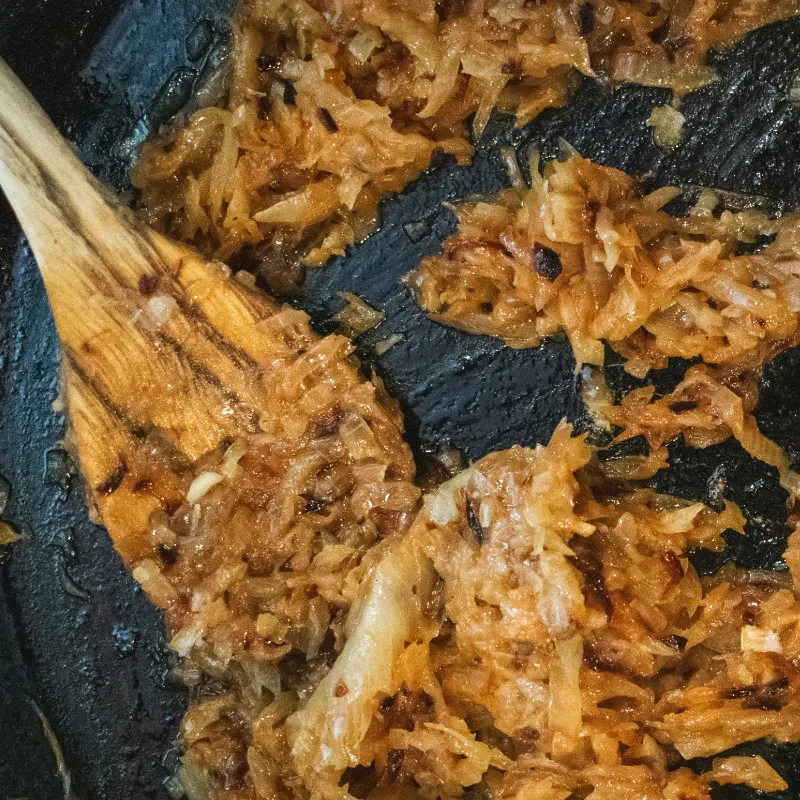How to Read and Follow a Recipe as Beginner
Cooking can seem daunting if you're a beginner in the kitchen, but it doesn't have to be! The secret to success lies in how to read and follow a recipe.
Think of a recipe as a roadmap to a delicious destination. With a little practice and these simple tips, you'll be cooking up a storm in no time!
If you like to write down recipe notes, then I can suggest this recipe notebook which has everything organized, and you only need to fill in the sections (eg, cook time, ingredients, instructions, extra notes).
1. Read the Entire Recipe First (as a Beginner Cook at Least Twice)

Before you even think about grabbing a pot or pan, take 5-10 minutes to read the recipe from start to finish. This crucial step helps you understand the overall process, identify any special equipment you might need and check for ingredients you don't have. It's like looking at a map before you start driving – you wouldn't want to get halfway to your destination only to realize you're missing a bridge!
- Why it's important: Prevents surprises, ensures you have all ingredients and tools and helps you plan your cooking timeline.
2. Gather Your Ingredients (Mise en Place)

"Mise en place" (pronounced "meez on plahs") is a French culinary term that means "everything in its place." Before you begin cooking, measure out all your ingredients and have them ready to go. Chop your vegetables, measure your spices and get your liquids prepped.
- Why it's important: This makes the cooking process smoother, faster and much less stressful. No more scrambling for an ingredient while something is burning on the stove!
3. Understand Common Beginner Recipe Terms
Recipes use specific language. Here are a few common terms you should know:
- Chop, Dice, Mince: These refer to cutting ingredients into progressively smaller pieces.
- Sauté: To cook quickly in a little fat over relatively high heat.
- Simmer: To cook food in liquid just below the boiling point.
- Fold: To gently combine a light mixture with a heavier one.
- Preheat: To heat an oven or pan to a specific temperature before adding food.
If you encounter a term you don't understand, a quick online search will usually clear things up!
4. Follow the Steps Sequentially
Recipes are written in a specific order for a reason. Resist the urge to jump ahead or combine steps unless the recipe explicitly states you can. Each step builds upon the last, contributing to the final delicious outcome.
- Why it's important: Following the sequence ensures proper cooking, texture and flavor development.
5. Pay Attention to Details: Measurements & Temperatures

Accuracy is key in cooking, especially for baking.
- Measurements: Use proper measuring cups for dry ingredients (levelled off!) and liquid measuring cups for liquids (read at eye level).
- Temperatures: Use an oven thermometer to ensure your oven is at the correct temperature. For meat, a meat thermometer is essential for food safety and perfect doneness.
6. As beginner Don't Be Afraid to Adjust (Once You're More Experienced)
While it's important to follow recipes closely as a beginner, don't be afraid to experiment once you've gained confidence. Recipes are often a guideline. You can adjust seasonings to your taste or substitute ingredients. However, as a beginner, stick to the script!
- Tip: Start by making small adjustments, like adding a pinch more salt or a dash of your favorite herb.
A perfect way to improve your cooking skills are our Quick and Easy recipes.
7. Clean as You Go

This isn't strictly part of following the recipe, but it's a golden rule of cooking! Cleaning bowls, cutting boards and utensils as you go will make the post-cooking cleanup much less daunting.
Final Thoughts
Learning to read and follow recipes is the first step on a rewarding culinary journey. Be patient with yourself, embrace the learning process and most importantly, have fun in the kitchen! Soon, you'll be whipping up delicious meals with confidence.


